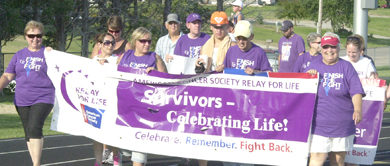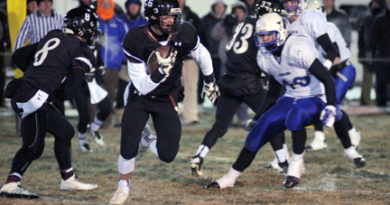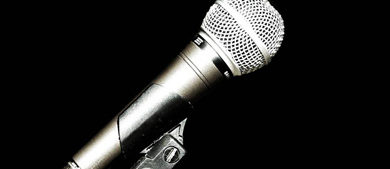It’s American Heart Month
Join us as we take a look at the nation’s No. 1 killer – coronary heart disease. Long time Thayer County physician, Dr. Marlin Bauhard, shares his expertise as well as his personal story about the heart.
Heart disease is the leading cause of death in the United States. Ask any health official, institute, clinic or physician and they’ll all say the same thing – heart disease kills more people each year than any other disease including cancer, respiratory diseases, stroke and Alzheimer’s.
According to figures released by the CDC (Centers for Disease Control and Prevention), heart disease killed 597,689 people in 2010, while cancer came in second killing 574,743 people that same year.
The most common type of heart disease is coronary artery disease (CAD), which can lead to a heart attack. CAD occurs when plaque builds up in the arteries that supply blood to the heart. Plaque is made up of cholesterol deposits which accumulate in the arteries causing the arteries to narrow. This process is called atherosclerosis.
“Often the first sign of coronary artery disease is sudden death,” says retired family physician Dr. Marlin Bauhard, “because the problem with the human heart is that you can have, let’s say, a 60 percent blockage from an atherosclerotic plaque and stress tests will be negative.
“If this plaque ruptures and a clot forms in the artery, it can kill you.”
Bauhard cites the recent death of Nebraska I-back Ken Clark. At 46 years old, the No. 6 all-time leading rusher for the Huskers died of a heart attack Saturday, Feb. 16.
For some people, the first sign of CAD is a heart attack which occurs when plaque blocks an artery carrying blood to the heart. Since coronary arteries deliver blood to the heart muscle, any coronary artery disorder or disease can have serious implications by reducing the flow of oxygen and nutrients to the heart. Atherosclerosis is the most common cause of heart disease.
Some people can experience a heart attack and never recognize the symptoms. Others may feel a heaviness, tightness, pressure or pain in the chest behind the breastbone. Pain radiating in the arms, shoulders, jaw, neck and back can also be present, or shortness of breath and weakness and fatigue may also plague the sufferer.
“In my case,” Bauhard says, “I just ran out of gas. I didn’t have any energy anymore and I was tired all the time.”
As a physician, Bauhard said he suspected coronary artery disease and immediately took a treadmill stress test. “It was positive,” he said.
That was in 2002.
The two main coronary arteries are the left main and right coronary arteries. (Note diagram at right.) The left main coronary artery, which divides into the left anterior descending artery (LAD) and the circumflex branch, supplies blood to the left ventricle and left atrium. The right coronary artery, which divides into the right posterior descending and acute marginal arteries, supplies blood to the right ventricle, right atrium, sinoatrial node (cluster of cells in the right atrial wall that regulates the heart’s rhythmic rate), and atrioventricular node (cluster of cells between the atria and ventricles that regulate the electrical current).
Bauhard’s discovered problem was a narrowing in the LAD artery, “so I had a stent put in to open the artery,” he said, explaining that a stent is a small mesh tube that’s used to treat narrow or weak arteries. The procedure, called angioplasty, restores blood flow through narrow or blocked arteries. A stent helps support the inner wall of the artery in the months or years after angioplasty.
But in 2011, Bauhard began to feel rundown again. “I had shortness of breath, no energy again, so it was back to the treadmill for another stress test.”
Again, the test was positive indicating a blockage somewhere. “It was in the LAD again, but this time it was at a branch point with another artery, which meant it couldn’t be fixed with a stent,” Bauhard said. “This time called for a bypass.”
Coronary artery bypass is created by grafting a piece of a vein above and below the blocked area of a coronary artery, enabling blood to flow around the obstruction. Veins are usually taken from the leg, but arteries from the chest or arm may also be used to create a bypass graft.
“We used the left internal mammary artery; the first artery off the aorta on the left,” Bauhard explained and added that his blocked artery was in the front so it was easy for the surgeon to get to. “He was able to operate while my heart was still beating,” Bauhard said noting that Dr. Ed Raines of Lincoln performed the surgery.
According to the American Heart Association, the use of the left internal mammary artery in bypass grafting has shown superior long-term outcomes compared with venous grafting.
Both the American Heart Association and Centers for Disease Control and Prevention state that the risk for coronary artery disease can be affected with lifestyle changes. “Stress is a leading cause of heart disease. Hypertension (high blood pressure), physical inactivity, smoking and obesity can all lead to heart problems,” Bauhard says indicating that controlling these risk factors is the key to preventing illness and death from CAD.
He also recommends that men over 50 years old take an aspirin a day. “Aspirin helps keep clots from forming by not letting the platelets stick together (how the plaque is built on the arterial wall),” he said adding that women should start the routine at 55 years old.
Today, the retired physician tries to take his own advice by sticking to an exercise routine, watching his diet and taking an aspirin every day “to the best of my ability,” he laughs. A statement he has no doubt heard over and over from many of his patients.




